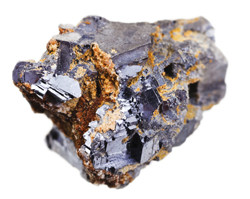Simple route to semiconductor crystals
Colloidal materials take advantage of inexpensive synthesis and subsequent processing routes. Copper is inexpensive, abundant and has relatively low toxicity compared to heavy metals commonly used in many semiconductor materials. Taken together, colloidal copper chalcogenides are a winning combination. The EU-funded project 'Low-toxicity copper chalcogenide semiconductor nanocrystals' (LOTOCON) focused on scalable and controllable synthesis of binary copper chalcogenides followed by partial cation exchange. The partial replacement of copper ions by others was planned to enhance tuneability of composition and morphology. Scientists chose the simplest copper chalcogenides as the starting point, nanoparticles consisting of copper sulphide (Cu2S), selenium and tellurium. Team members developed a novel synthetic route to their controlled production at moderate temperatures, avoiding the use of harmful and expensive phosphines. A variety of shapes were produced from small spherical particles to large and thin 2D sheets. The materials were successfully used as cathodes for fabrication and testing of lithium-ion batteries. Importantly, the method was easily scaled, offering great potential for industrial manufacture. Subsequent work on partial cation exchange led to easy production of alloyed nanoplates with a tuneable band gap. The strategy was also applied to the much larger copper selenide nanosheets produced within the project. The materials were subsequently processed into thin films and implemented in solar cell devices. The cation exchange route is broadly applicable to a variety of cations and copper chalcogenide nanoparticles. This provides an industrially important route to a number of materials that would otherwise be difficult to produce. Building on these results, the team developed a one-pot synthesis method using Cu2S nanocrystals and partial cation exchange of Cu with indium and zinc, leading to enhanced photoluminescence efficiency and tuneable light emission. Cytotoxicity tests confirmed biocompatibility, opening the door to application as fluorescent biomarkers. Along the way, the team shed important light on the mechanisms of cation exchange, a widely used yet poorly understood process, which will aid in knowledge-based design and synthesis. The work has been widely published in prestigious peer-reviewed scientific journals. LOTOCON technology is expected to have widespread impact on industrially relevant fields, including solar cell technology, catalysis and biomedicine.







